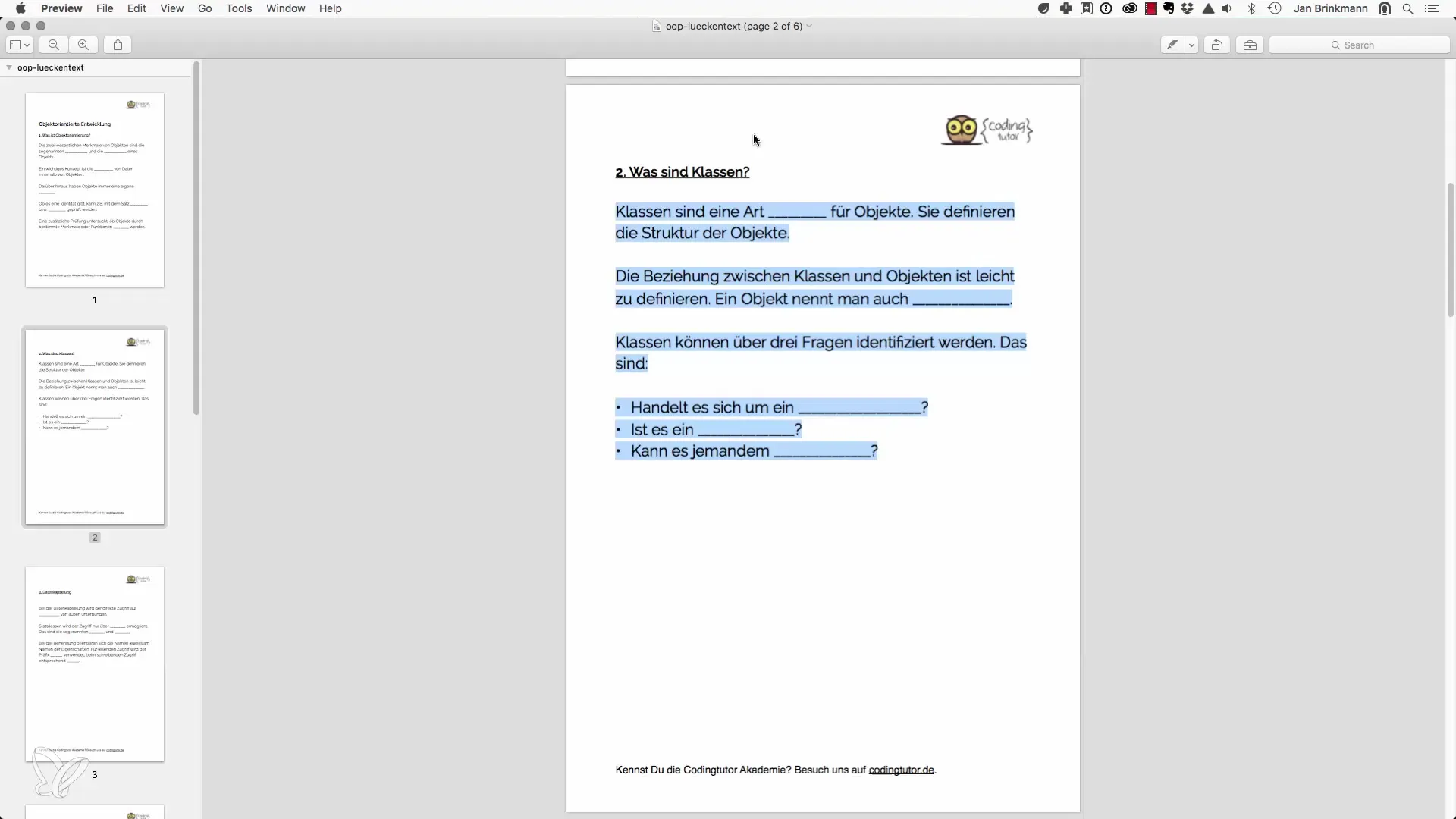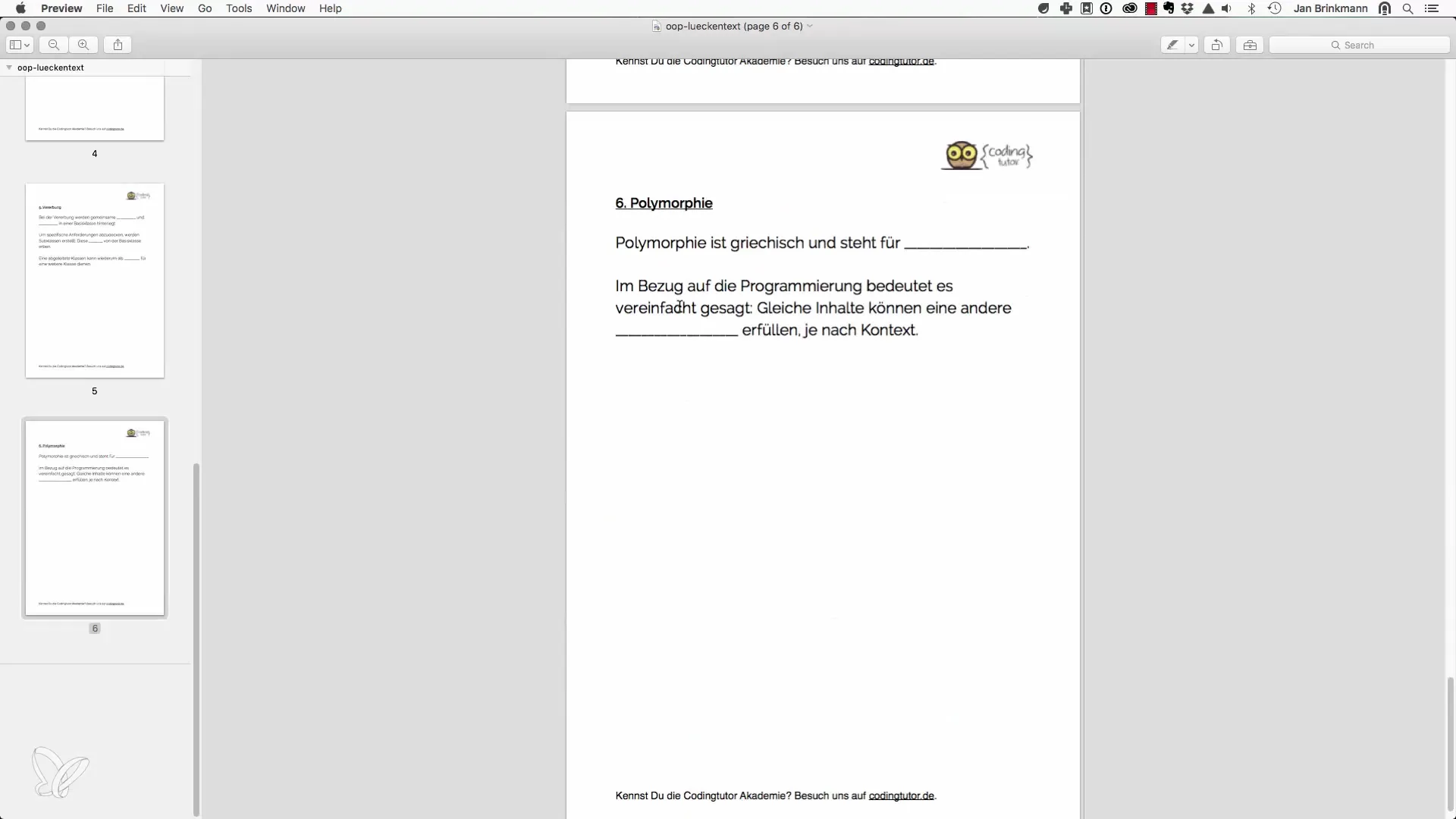The object-oriented programming (OOP) plays a central role in modern web applications. In this tutorial, you will not only learn the basics of OOP but also actively test your knowledge through a fill-in-the-blanks exercise. This keeps learning exciting and interactive, even as we initially stay in the theoretical realm.
Key Insights
- Understanding the fundamental concepts of object orientation.
- The importance of classes and data encapsulation.
- Interactive learning through the completion of a fill-in-the-blanks exercise.
Step-by-Step Guide
Step 1: Introduction to Object-Oriented Programming
At the beginning of the tutorial, you will learn about the basics of object orientation. It will be explained why this topic may sound theoretical but is still very important and exciting. Here, you will also be told that you do not need to enter any code yet, which means this is a theoretical introduction.

Step 2: The Fill-in-the-Blanks as a Learning Tool
To support your learning, a fill-in-the-blanks exercise has been developed, which you can complete during the tutorial. This fill-in-the-blanks exercise is intended not only as a quiz but also as a reference you can refer back to later. You will be prompted to search for answers to fill in the blanks while working through the chapter.
Step 3: Lessons and Topics
The tutorial points out that there are various lessons that cover specific topics of OOP. You will receive information about what object orientation is and can directly associate these questions with the corresponding lessons. Understanding these concepts is important for better processing of the subsequent information.
Step 4: Classes and Their Importance
A central theme in object-oriented programming is classes. There is a dedicated lesson on this topic that explains what classes are and what role they play in OOP. Understanding this knowledge is crucial for recognizing recurring patterns in programming.

Step 5: Data Encapsulation
Another essential concept of OOP is data encapsulation. There is also a lesson on this, which will help you better understand the topic. It is important that you know the terms and the meaning behind data encapsulation in the context of OOP to make informed decisions in practice.

Step 6: Questions and Answers
After you have worked through the various lessons, you will answer several questions and blanks in the fill-in-the-blanks exercise. These questions will help you apply and solidify the knowledge imparted actively. At the end of the chapter, you will have the opportunity to go through the solutions together to ensure that you have understood the concepts.

Summary – Object-Oriented Web Programming with PHP – Successfully Complete the Fill-in-the-Blanks
In this tutorial, you learned the basics of object-oriented programming and could actively test your knowledge through a fill-in-the-blanks exercise. This interactive approach ensures that you can better process and apply the theoretical knowledge. In the end, you have the opportunity to review your answers and reflect on all the important concepts once again.
Frequently Asked Questions
What is object-oriented programming?Object-oriented programming (OOP) is a programming paradigm that focuses on objects and uses them to develop software.
Why is data encapsulation important?Data encapsulation protects the data and ensures that it can only be manipulated through defined interfaces, increasing the stability and security of the code.
How does the fill-in-the-blanks exercise help with learning?The fill-in-the-blanks exercise forces you to actively search for the correct answers, which improves information retention and solidifies theoretical knowledge sustainably.


